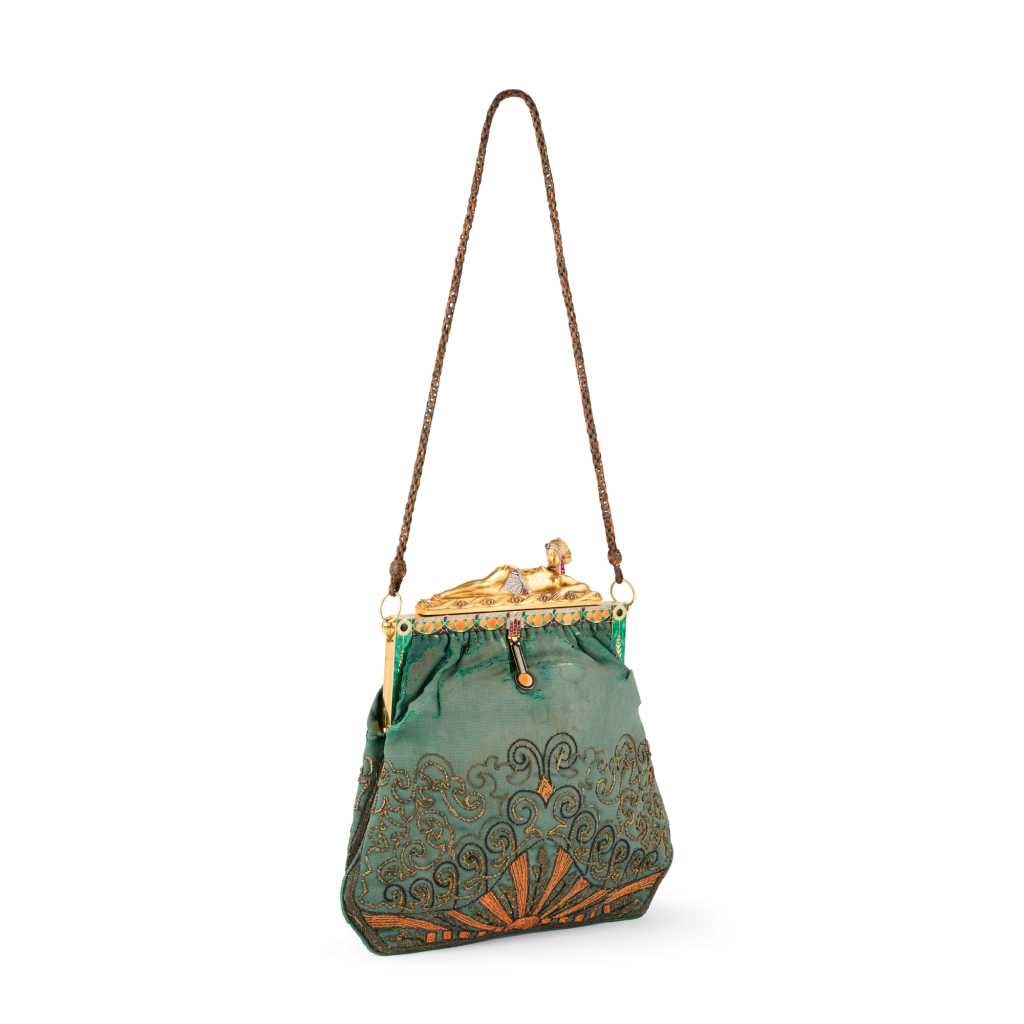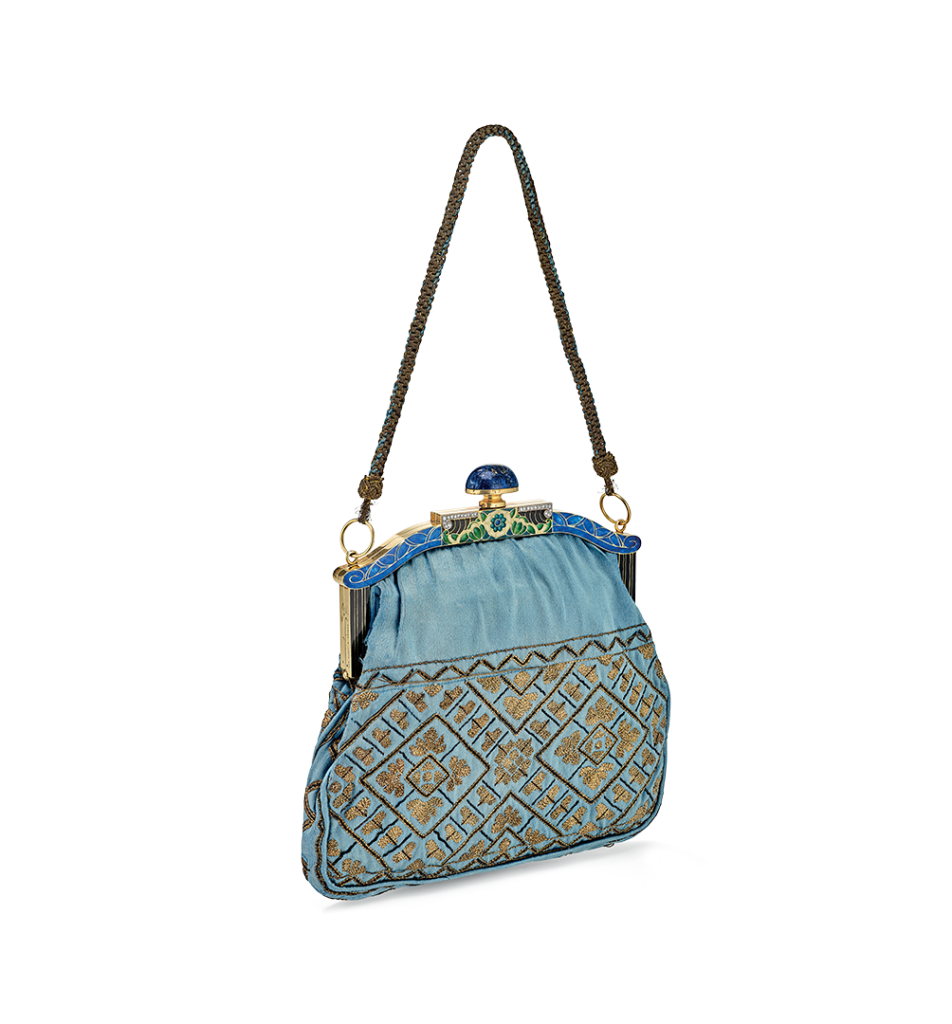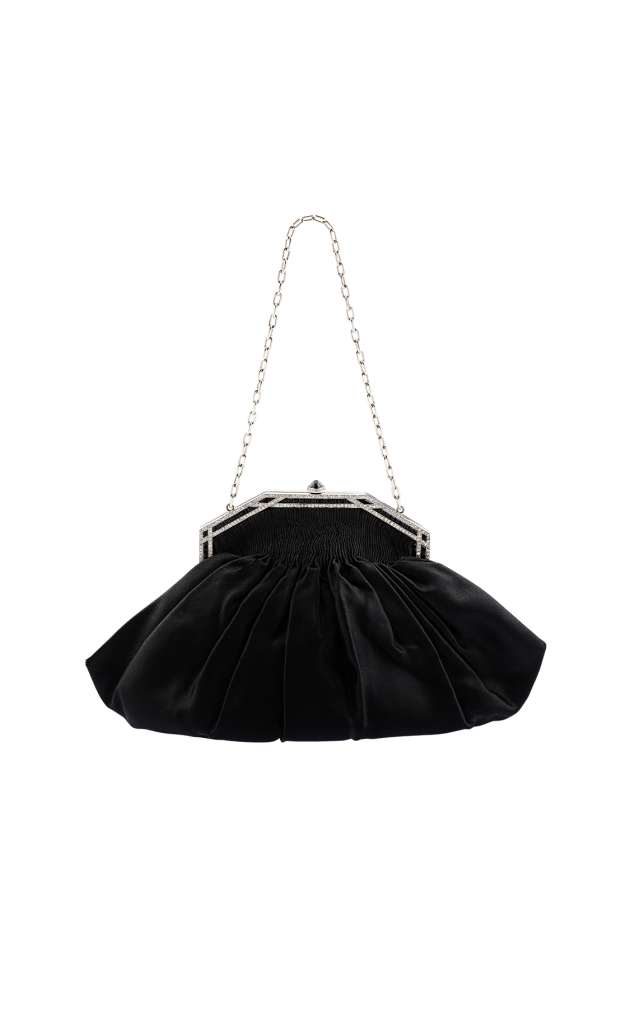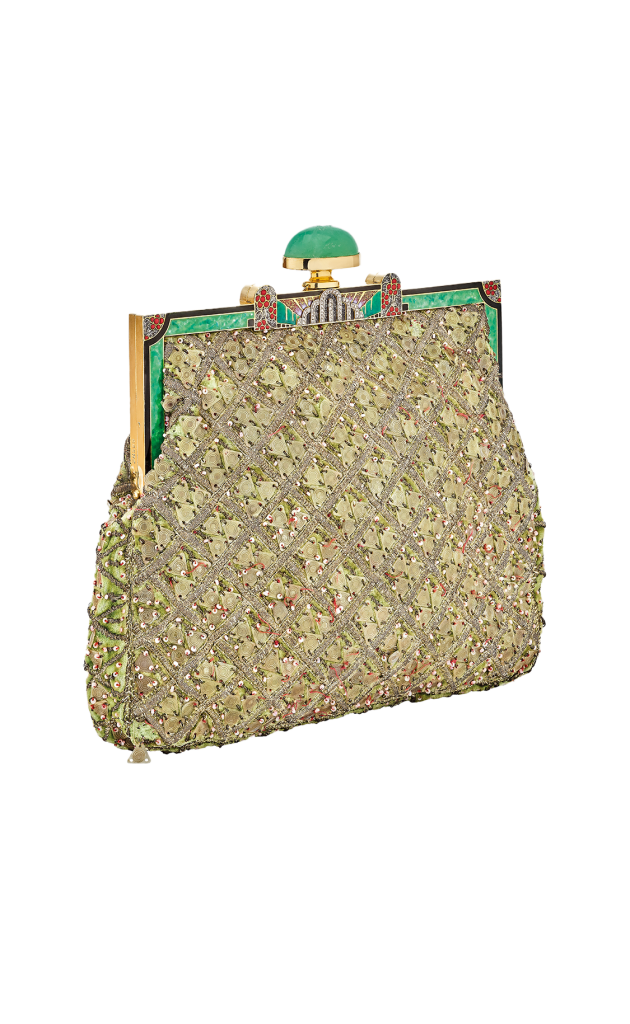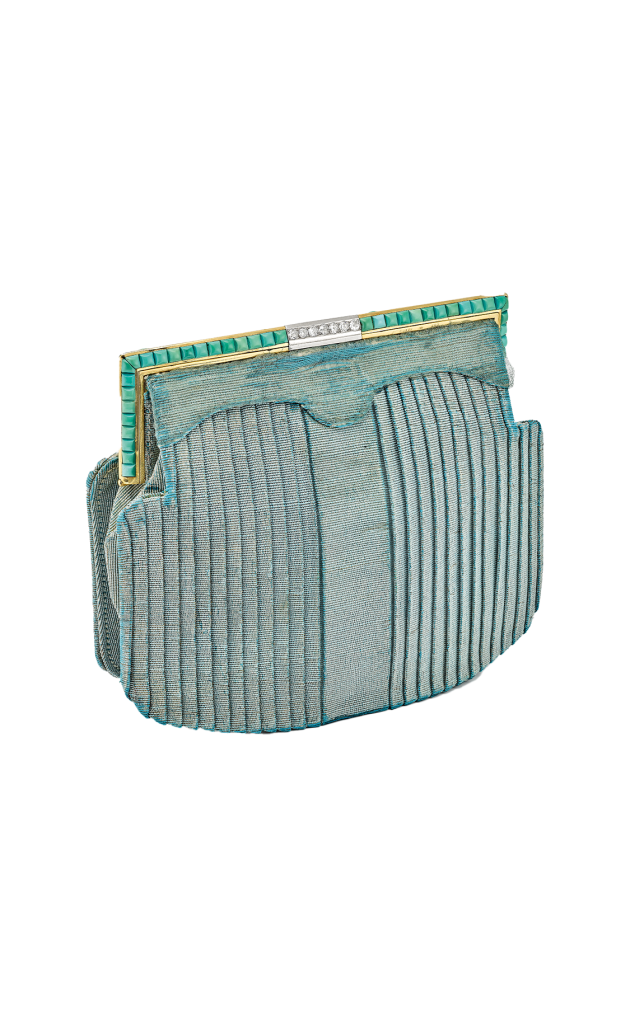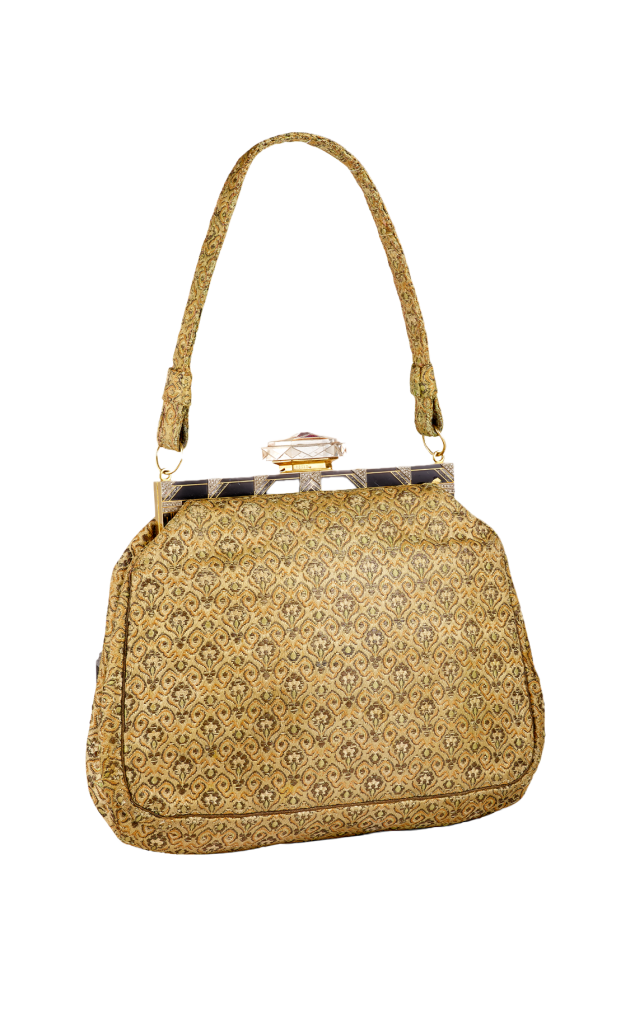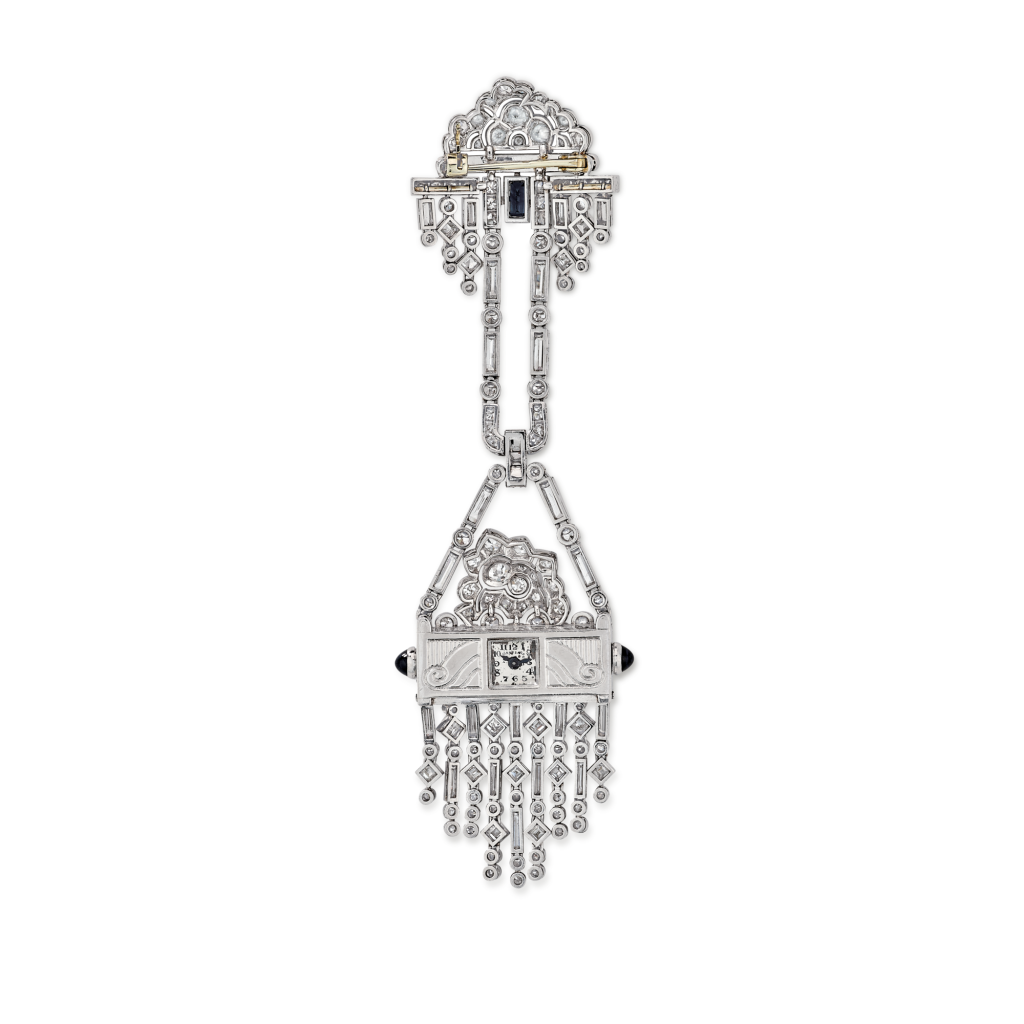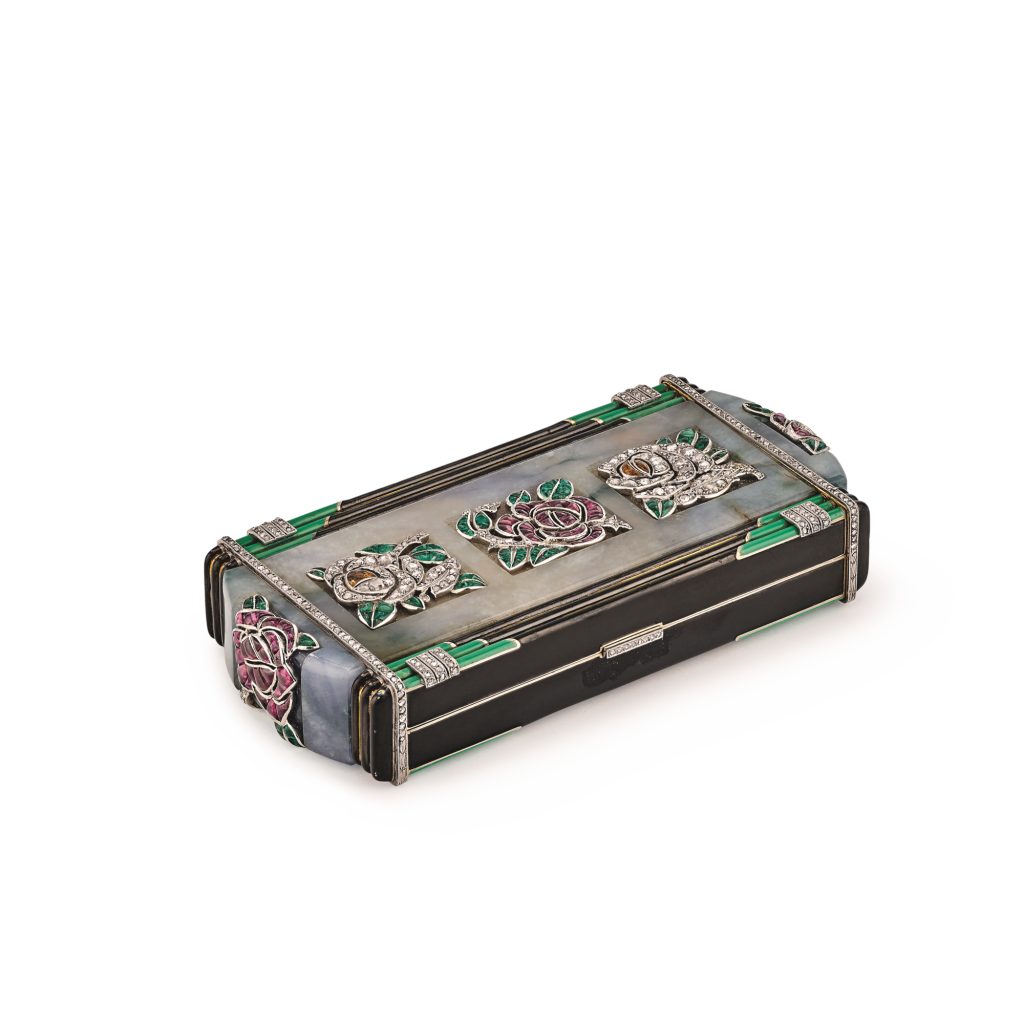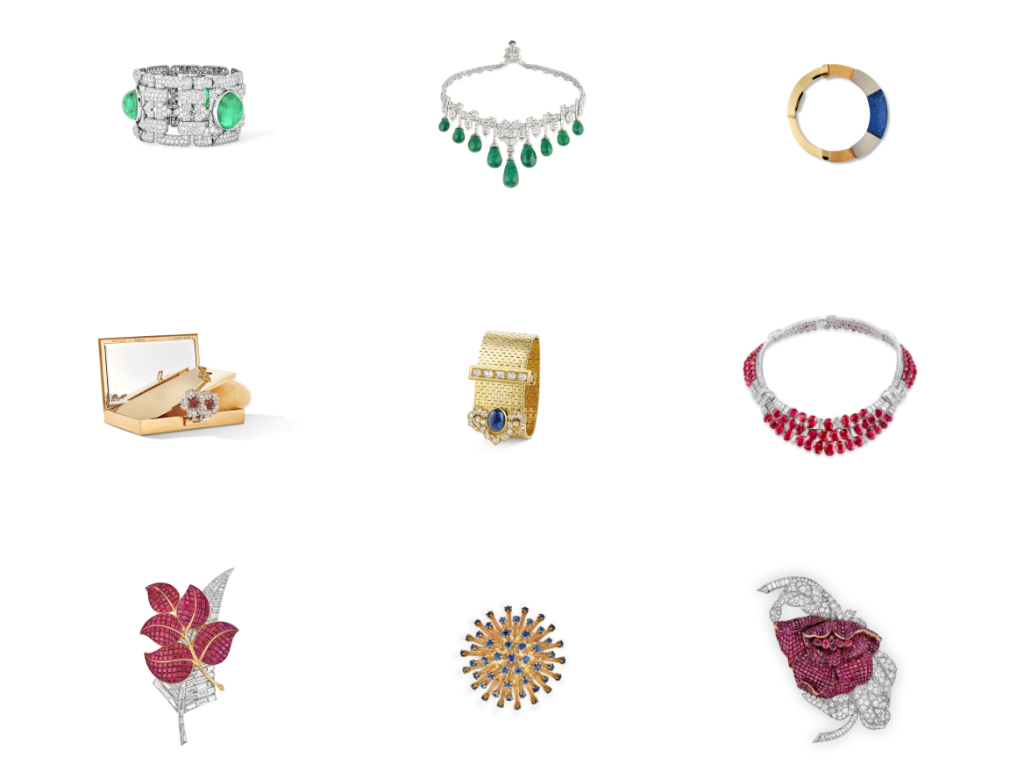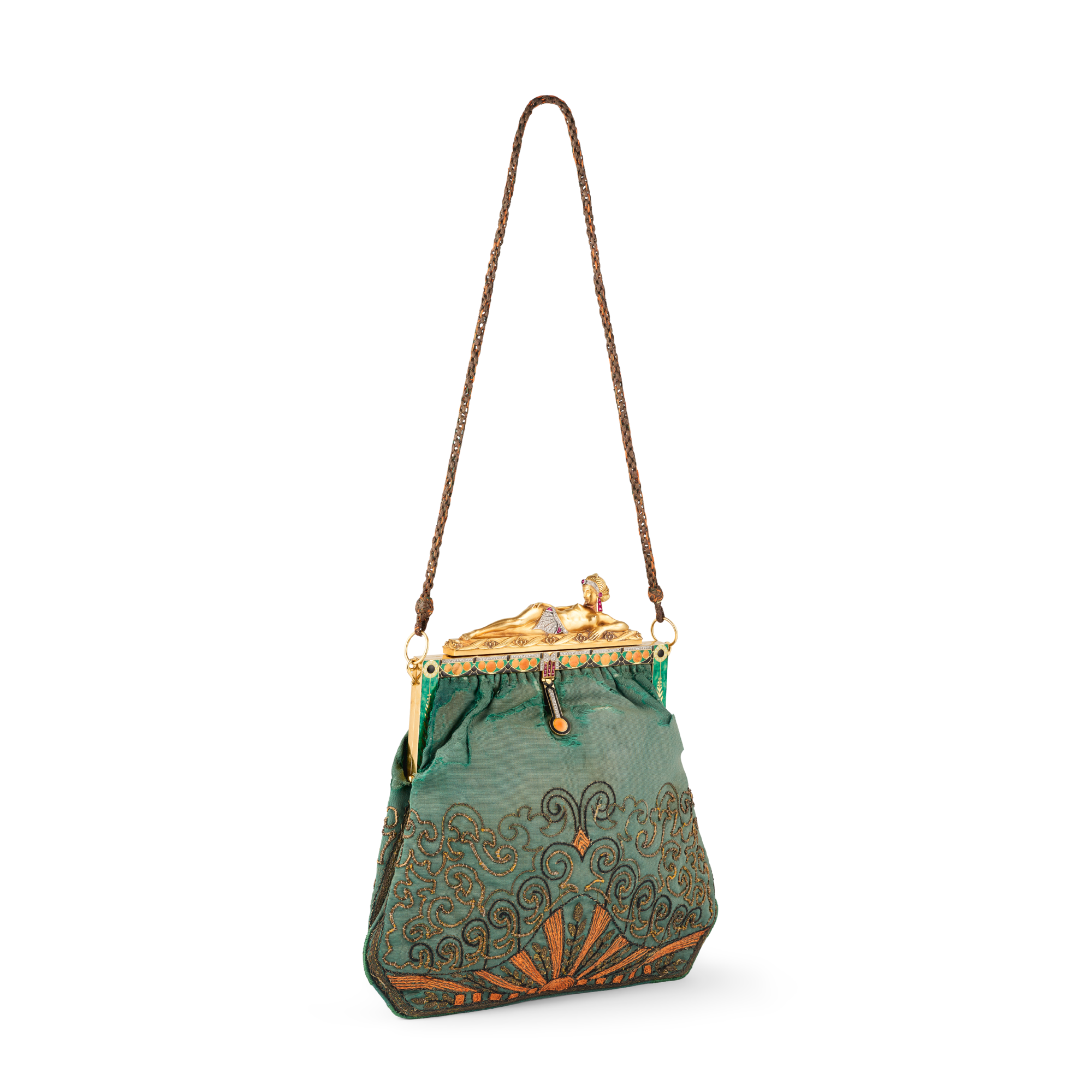
Purse
Creation details
- Creation year 1926
- Stone Diamond
- Stone Ruby
- Material Enamel
- Material Gold
- Material Platinum
- Material Silk
- Usage Other
- Dimensions 127 × 178 mm
This piece is one of the rare examples produced by Van Cleef & Arpels of a purse featuring a figurative clasp. In addition to the polychrome arabesques embroidered on the purse’s fabric, the piece stands out for the originality of its metallic clasp.
It is composed of a female figure drawn from antiquity, sculpted in yellow gold. She is shown clad in an open- work loincloth with a headdress set with brilliants and calibrated rubies, stretched out on a bench of yellow gold decorated with a frieze of flowers and an interlaced design. A metallic border—in green enamel that blends with the color of the silk fabric—is used to open and close the purse. It is decorated with festoons, each with three circular orange enamel motifs, outlined by a row of alternating brilliants and black enamel. Two metal loops link the metal hinges to a cord forming the purse’s handle.
The production of clasps
Between 1925 and 1927, the Maison produced over forty purse clasps decorated with subjects in stone and engraved metal, all richly colored thanks to the use of enamel. The iconographic repertory chosen for these clasps drew heavily on Middle Eastern art: ancient figurines, Persian subjects, and even numerous “Buddha studs.”
The enduring influence of Orientalism in the 1920s
The semi-naked state, stretched-out posture, and “Oriental” sartorial attributes of the figure adorning this purse evoke an odalisque, a presence glorified by nineteenth-century painters. The odalisque originally designated the slave of a concubine or of the wife of an Ottoman sultan and appeared in the scènes galantes of eighteenth-century paintings before becoming an important artistic subject in the following century. At the start of the second decade of the twentieth century, a new form of Orientalism burgeoned in the fashion arts and continued into the following decade, as witnessed by this purse.
To go deeper
